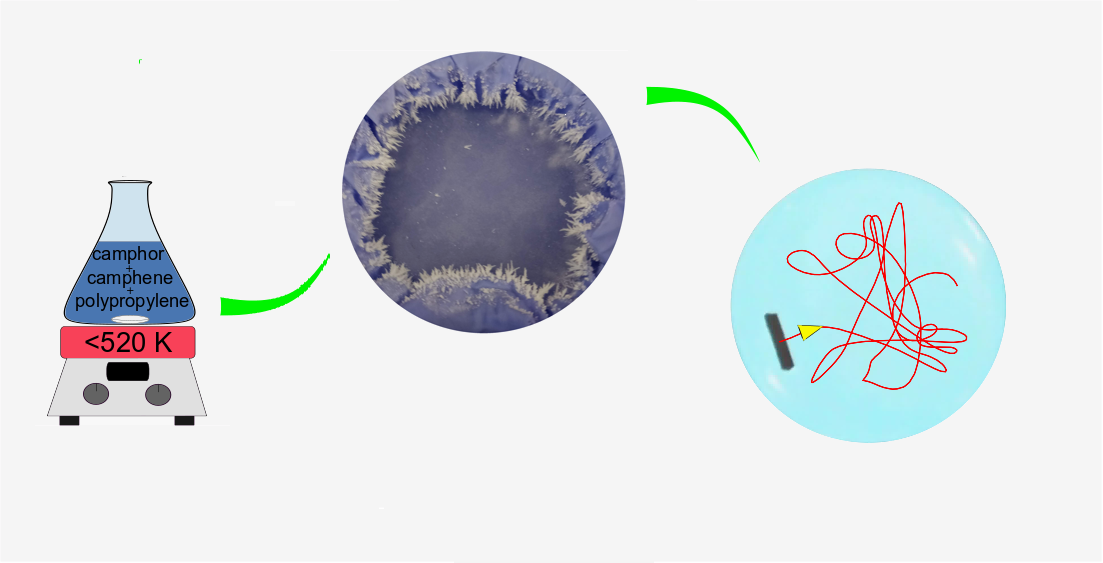A Perfect Plastic Material for Studies on Self-Propelled Motion on the Water Surface.
Löffler, R. J. G., Hanczyc, M. M., & Gorecki, J.
Molecules 2021, 26, 3116
Abstract
 We describe a novel plastic material composed of camphene, camphor, and polypropylene that seems perfectly suited for studies on self-propelled objects on the water surface. Self-motion is one of the attributes of life, and chemically propelled objects show numerous similarities with animated motion. One of important questions is the relationship between the object shape and its motility. In our previous paper, {R. Löffler et al. PCCP, 2019, 21, 24852–24856}, we presented a novel hybrid material, obtained from the solution of camphor in camphene, that allowed making objects of various shapes. This hybrid material has wax-like mechanical properties, but it has a very high tackiness. Here, we report that a small amount of polypropylene removed this undesirable feature. We investigated the properties of camphor–camphene–polypropylene plastic by performing the statistical analysis of a pill trajectory inside a Petri dish and compared them with those of camphorcamphene wax. The plastic showed the stable character of motion for over an hour-long experiment. The surface activity of objects made of plastic did not significantly depend on the weight ratios of the compounds. Such a significant increase in usefulness came from the polypropylene, which controlled the dissipation of camphor and camphene molecules.
We describe a novel plastic material composed of camphene, camphor, and polypropylene that seems perfectly suited for studies on self-propelled objects on the water surface. Self-motion is one of the attributes of life, and chemically propelled objects show numerous similarities with animated motion. One of important questions is the relationship between the object shape and its motility. In our previous paper, {R. Löffler et al. PCCP, 2019, 21, 24852–24856}, we presented a novel hybrid material, obtained from the solution of camphor in camphene, that allowed making objects of various shapes. This hybrid material has wax-like mechanical properties, but it has a very high tackiness. Here, we report that a small amount of polypropylene removed this undesirable feature. We investigated the properties of camphor–camphene–polypropylene plastic by performing the statistical analysis of a pill trajectory inside a Petri dish and compared them with those of camphorcamphene wax. The plastic showed the stable character of motion for over an hour-long experiment. The surface activity of objects made of plastic did not significantly depend on the weight ratios of the compounds. Such a significant increase in usefulness came from the polypropylene, which controlled the dissipation of camphor and camphene molecules.



